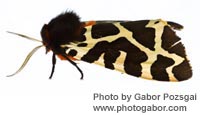Introduction
 This page has been mothballed.
This page has been mothballed.
It is no longer being updated but we've left it here for reference.
Briefing paper for the Scottish Executive on Progress with a 'New Image of Scotland' Project
- Introduction
- The 1988 Scottish Development Department's aerial photograph (AP) coverage of Scotland was the first such national coverage. It enabled baseline information on rural land cover to be mapped at a scale of 1:25,000 in the Land Cover of Scotland (LCS) 1988 project whose classification system was developed specifically to provide information on semi-natural cover features. It was always intended that LCS88 would be used to provide information on land cover change on a regular basis. Due to the advances in technology over the past decade, the AP used in the future LCS may well take the form of a digital and orthorectified dataset. This will be able to provide a series of other products, along with an updated land cover map, for use in areas such as urban and rural land use planning, asset/estate management, transport planning and design, emergency planning, flood plain studies, et cetera. Although the Macaulay Land Use Research Institute proposes an updated land cover map, the initial role of the steering group of the New Image of Scotland is to determine the technical specifications for a new National AP Archive.
- What has been done by way of preparation
- Through workshops held at the Macaulay Land Use Research Institute we have reviewed the technical options for a repeat LCS and have concluded that the interpretation of aerial photography is the best option. The reasons for this are: Firstly the lack of any credible alternative for detailed land cover mapping, and, secondly the increased availability and use of digital image processing as is found in most GIS packages. Within this context there is an increased demand and potential for AP.
- There has been an increased emphasis on the aerial photography, which was reflected by the steering group for the new LCS. The steering group consists of representatives from a range of environmental organisations and some from commercial companies: RSPB, ITE, RCAHMS, Scottish Office GIS Group and Agriculture Depts., Scottish Landowners Federation, MLURI, SNH, COSLA, SEPA, Forestry Commission, Highland Birchwoods, Ordnance Survey, Aerofilms Ltd., The GeoInformation Group, NRSC Ltd.
The main conclusion was that the specification of the AP for a new LCS was of interest to a range of other organisations, and in that sense the AP was seen as important in its own right. It was agreed that that the initial role of the steering group was to determine the technical and managerial specifications for the acquisition of a national AP coverage. - The result was the division into 5 phases of the path to a land cover map:
- Phase I: Aerial photography acquisition at 1.0 metre, 0.25 metre or 'hybrid' ground resolution.
- Phase II: The digitisation of the aerial photos to create a digital photo base
- Phase III: The ortho-rectification of the digital images to create digital ortho-image base (i.e. photos with map quality positioning and accuracy)
- Phase IV: The provision of a viewing package that will facilitate the compression and the large quantities of digital data.
- Phase V: The creation of the new Land Cover of Scotland map.
- The approximate costs for Phases I and II have been given by the commercial companies.
- Phase I: £600,000 for complete coverage at 1:20,000 scale (1m ground resolution).
- Phase II: £500,00 for true scanning at 1200 dpi of the complete AP coverage.
- Phases III and IV have been very roughly costed at approximately £3m (proper costings and partnerships would reduce this).
- Discussions around the options for funding have been influenced by three main criteria:
- The structure of the funding model - whether to aim for a wide or narrow consortium;
- The nature of possible principal sponsors (private or public), and whether the best option for funding include consortium, partnership, etc;
- The ownership of the data - who holds the copyright.
- Conclusions
- From the research that has been conducted around this project so far, we are able to present two "preferred" scenarios as the way forward. These have evolved from the processes outlined above: technical and user workshops; debates on possible directions of a new land cover of Scotland via the Steering Group; discussions with commercial companies as well as with environmental organisations; evaluation of all inputs from a range of perspectives.
Broadly the outputs are:- A small consortium of environmental organisations in partnership with a commercial company that involves a hybrid funding model of public and private partnership, and the accommodation of Crown copyright.
- A partnership with Ordnance Survey to acquire Phase I, that incorporated a hybrid funding model, maintained Crown copyright, and the putting out to tender of Phases II to IV.
- From the research that has been conducted around this project so far, we are able to present two "preferred" scenarios as the way forward. These have evolved from the processes outlined above: technical and user workshops; debates on possible directions of a new land cover of Scotland via the Steering Group; discussions with commercial companies as well as with environmental organisations; evaluation of all inputs from a range of perspectives.

